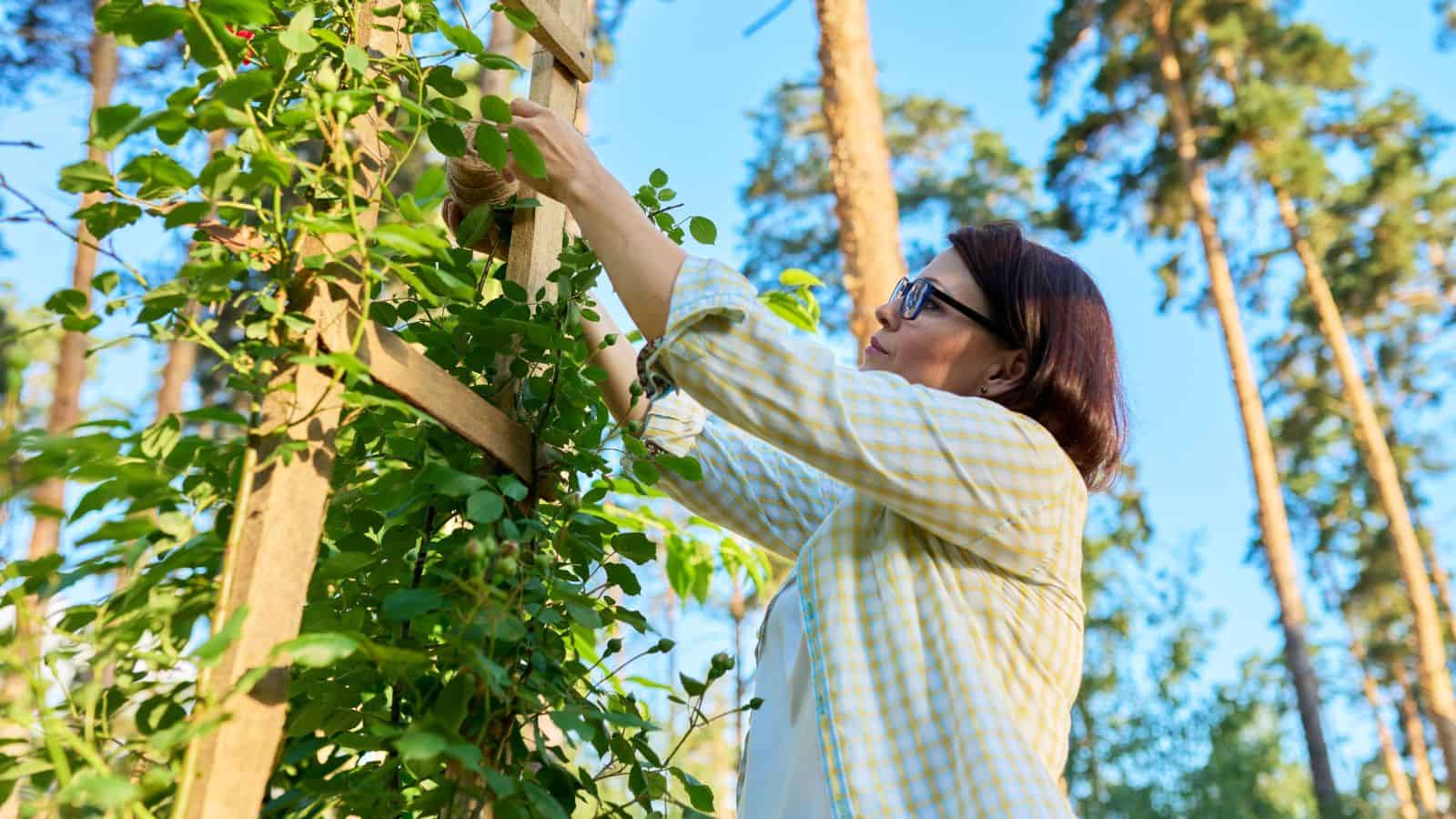Supporting climbing plants effectively is essential for their healthy growth and for creating beautiful garden structures. Proper support ensures that climbing plants can grow upwards, receive adequate light, and produce abundant blooms or fruits. Here’s the best way to support climbing plants in your garden.

Choosing the Right Support Structure
Selecting the appropriate support structure is crucial for the success of your climbing plants. Different types of climbers have different needs, so it’s important to match the support to the plant.
Types of Support Structures:
- Trellises: Ideal for lightweight climbers like sweet peas, clematis, and morning glories. Trellises can be made of wood, metal, or plastic and come in various shapes and sizes.
- Arches and Arbors: Perfect for creating entryways or focal points in your garden. They work well with roses, wisteria, and honeysuckle.
- Obelisks: Decorative and functional, obelisks provide a vertical element and are great for smaller climbers.
- Fences and Walls: Suitable for sturdy climbers like ivy, climbing roses, and jasmine. Ensure the structure is strong enough to support the weight of mature plants.
- Netting and Wire: Useful for annual climbers and vegetables like beans and peas. Netting can be easily attached to existing structures.
Installing the Support
Proper installation of the support structure is essential to provide stability and ensure the longevity of both the structure and the plant.
Installation Tips:
- Secure Anchoring: Make sure the support is firmly anchored in the ground. Use stakes, screws, or cement bases for larger structures to prevent them from tipping over.
- Proximity to the Plant: Place the support close to the plant’s base to encourage it to start climbing. If planting new climbers, install the support before planting to avoid disturbing the roots later.
- Adjustable Supports: For growing plants, use adjustable ties or clips to attach them to the support. This allows you to move and reattach them as they grow.
Training the Plant
Training your climbing plants to grow on the support structure involves guiding and sometimes gently tying them to the support.
Training Techniques:
- Guiding: Gently guide the tendrils or stems towards the support. Check regularly and adjust as needed.
- Tying: Use soft ties, such as garden twine, cloth strips, or specialized plant ties, to secure the stems to the support. Avoid using materials that can cut into the plant as it grows.
- Pruning: Regularly prune the plant to remove dead or overcrowded growth. This encourages healthy growth and prevents the plant from becoming too heavy for the support.
Regular Maintenance
Ongoing maintenance is necessary to keep your climbing plants healthy and the support structure effective.
Maintenance Tips:
- Inspect Ties and Supports: Regularly check ties and supports to ensure they are secure and not damaging the plant. Adjust as the plant grows.
- Prune and Trim: Prune regularly to manage growth, encourage flowering, and remove any damaged or diseased parts.
- Monitor for Pests and Diseases: Climbing plants can be susceptible to pests and diseases. Keep an eye out for any signs of trouble and address them promptly.
By providing the right support structure and following these best practices, you can ensure that your climbing plants grow strong and healthy.
